How to Help Local Businesses Struggling Through COVID-19 Restrictions
Need Activities During the Shutdown, This Website Offers Free Virtual Classes From Locals
City Officials Earn Thousands in FEMA Funds while Bills Pile Up at Orange Library
Jul, 27 2021 - 09:30 am
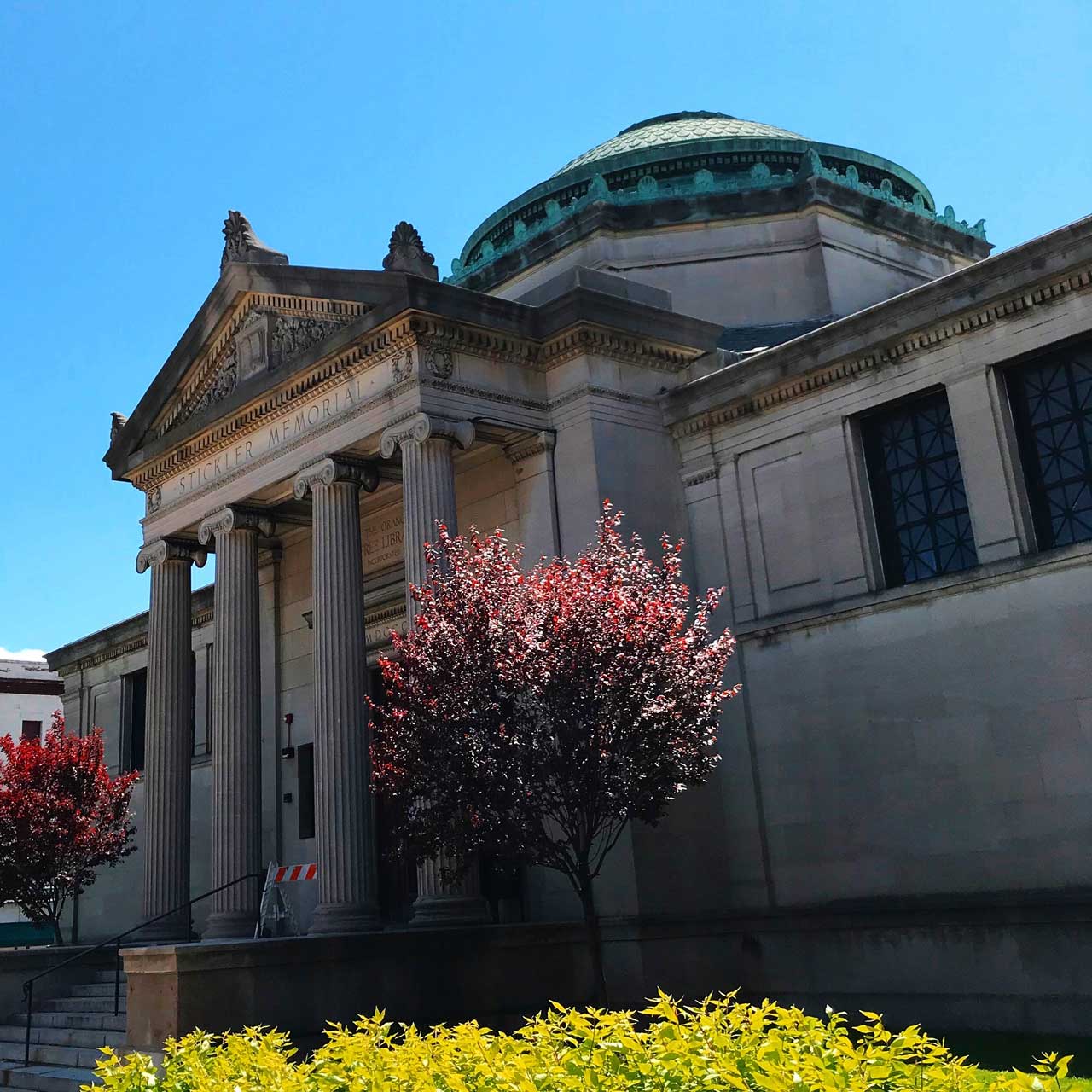
Those who frequent the Orange Public Library have long know something was not quite right, whether it’s having no air conditioning on the hottest summer days, the website that hasn’t been updated in years, or the lack of new reading materials. But few knew the depths of the city’s mismanagement of this century-old institution until a library staff member reached a breaking point and decided to speak out after months of willful neglect by city officials and thousands in unpaid bills.
According to this library employee, who will be referred to in this story as the “whistleblower,” things began to go wrong during the pandemic when library staff was put on a paid leave from March to October last year. It was understood that monthly bills would be brought to City Hall by a member of the library board for payment — but that’s not what allegedly happened.
Once restrictions were lifted, the three librarians — now without their director, Sarah Wiggins, who never returned from a medical leave — came back to find the phone service had been cut off because the bill had not been paid.
Around February of this year, concerns grew over other bills. Subscriptions for DVDs and E-books were suddenly cut off. Another bill had fallen into the hands of a collection agency. And a long-standing relationship with a neighboring library was severed due to unpaid overdue fees.
“It’s a reciprocal service and it comes with reciprocal responsibilities,” said David Cubie, director at West Orange Public Library. “I know of another library that won’t loan out books to Orange residents because the city won’t pay their fines.”
The whistleblower decided to review the bills before they were forwarded to City Hall. “I couldn’t believe what I was seeing,” said the whistleblower, who found bills totaling tens of thousands of dollars, including an unpaid bill from PSEG for $35,000.
Even before the pandemic, the library, a Neoclassical landmark built in 1901, was in need of repairs. The copy machine is 20 years old and the air conditioner hasn’t worked since 2013. The website works, but it hasn’t been updated in two years. All that is neither here nor there, because the library hasn’t bought any new books or DVDs in two years. The city hasn’t given them money for new materials.
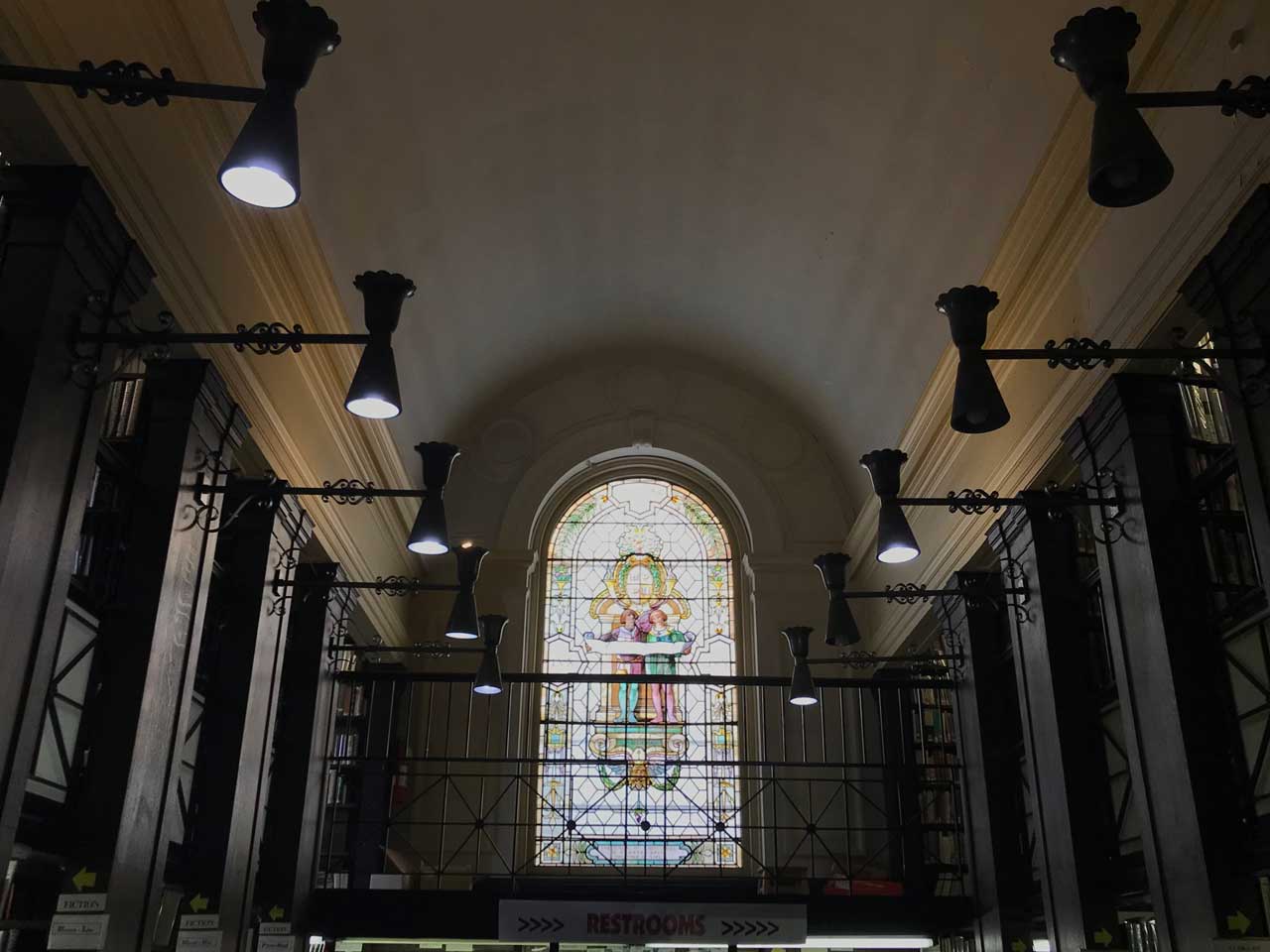
Rumors began to circulate that the board of trustees is threatening to furlough the staff in order to fund these repairs. Jersey Digs as the a member of the library board whether they applied for the state grant last year called the Library Bond Act, which can go toward repairs. David McKnight, a member of the library board, told Jersey Digs the city did, in fact, apply for the grant.
“There were a lot of things that went on that needed to be changed,” McKnight said. “We had to stop the mismanagement and put a capital plan in place. There were also issues dealing with employees. We’re making the changes.”
Regarding the unpaid bills, McKnight said the library has been going through a transition period without a director and with a newly hired finance chief at City Hall. “There might have been bills that got overlooked,” McKnight said. “But to say that we don’t have money to pay bills, no, that’s not what the issue was.”
The three librarians eventually paid the $500 phone bill with personal money, for which they still haven’t been reimbursed.
Meanwhile, 69 city officials padded their salaries with $10,000 or more in FEMA funds. The top earner of federal funds was Kathrina Nease, the water superintendent, who earned $156,000 in pandemic relief funds on top of her six-figure salary, followed by the mayor’s cousin and Director of Public Works Raymond Wingfield’s $90,000, and Business Administrator Christopher Hartwyk’s $74,000. Since publication of this piece, Hartwyk has reached out to us to contest these earnings.
Even if city officials can make a legal argument for earning five and six figures in federal money, the real question is whether it is appropriate, especially when other services are failing so miserably to meet the needs of the community.
Most concerning, perhaps, is whether the library’s two funding streams — an endowment from the Watson family of IBM fame, as well as funds from the Office of Emergency Management — have mysteriously dried up, or if they have simply been overlooked as McKnight has insisted.
“God knows what they did with the money,” the whistleblower said, “but they didn’t use it to pay the bill.”
The last time Karen Jeffries-Wells stopped by the Orange Public Library, she saw the library staff in tears.
“This is the most dedicated staff,” said Jeffries-Wells, chair of the city’s historic preservation commission. “Anyone else would have quit.”
--
Iconic Essex House Restaurant Couldn’t Survive Pandemic, Could Become Site of Residential Building
Mar, 29 2021 - 09:30 am

For four decades, The Essex House, a banquet hall in West Orange, inhabited a nearly century-old building that resembles an English inn with a signature dining room fashioned out of a retired railroad car.
But like many beloved businesses, The Essex House was derailed by the pandemic. The owners are now partnering with Newark-based developer Hanini Group to bring a five-story residential building to the property.
“I get emotional just thinking about it,” said the owner’s daughter Kathy Markouris, after sharing her struggles of the previous year at a community meeting last week.
This isn’t the first time the owners have tried to redevelop the two-acre lot. In 2010, their proposal to put up a strip mall there reached the zoning board stage. But township officials convinced the Markouris family to back down for the sake of saving the landmark, according to a news report.
The current proposal, which has to be approved by the town planning board, again calls for the demolition of the original structure, this time to make way for a building with 100 market-rate rental units and a ground-floor shop.
The historic building couldn’t be salvaged due to a foundational issue, the Hanini Group said. The news surprised some community members familiar with the developer, who is closely associated with preservation work, having earned accolades for adaptive-reuse projects in downtown Newark like the Hahne & Co. building.
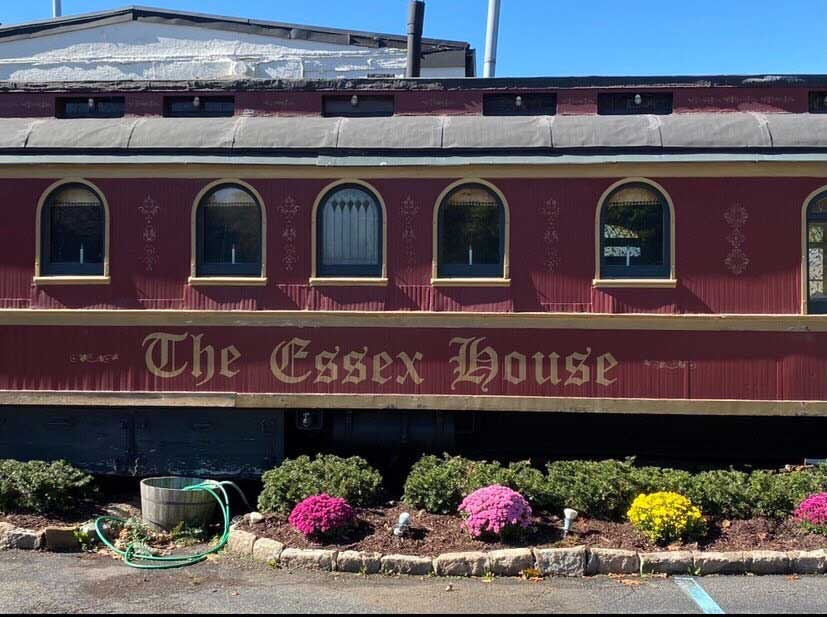
“What we’re trying to do is incorporate some of the historic details into the new design,” said Samer Hanini, managing partner of his namesake firm. “I will definitely take a lot of the artifacts that are in the restaurant and incorporate them into the lobby.”
The Essex House is located on the southern border of the St. Cloud neighborhood. In 1992, a preservationist architect named Robert Guter undertook a survey of landmarks in town and proposed designating St. Cloud as a historic district.
Guter, in the three-volume report, recounts the history of St. Cloud, from its early days as a 19th-century resort village to becoming a fashionable address for notables like Civil War-hero General George McClellan.
Today, all that is left of the resort is the mineral spring. However, the residences remain, including a rare collection of Second Empire homes, 19th-century churches, and a monastery build in 1932.
The designation of St. Cloud as a historic district, which would have put restrictions on development there, never came to pass. An open secret is that West Orange town officials are traditionally averse to burdening homeowners with the sort of rules that historic districts entail.
Llewellyn Park remains the town’s only historic district. Interestingly, the paperwork arranged for its designation on the National Register of Historic Places wasn’t prepared by any town official but by Guter in 1984.
“It’s unfortunate we have to knock down the building,” said Hanini about the prospects of both saving the old building and constructing new apartments. “I assure you, if there was a way, we would try to do.”
--
Developer Chooses ‘Not to Pursue’ 18-Story Urby Project Along Sip Avenue in Jersey City
Mar, 04 2021 - 08:30 am
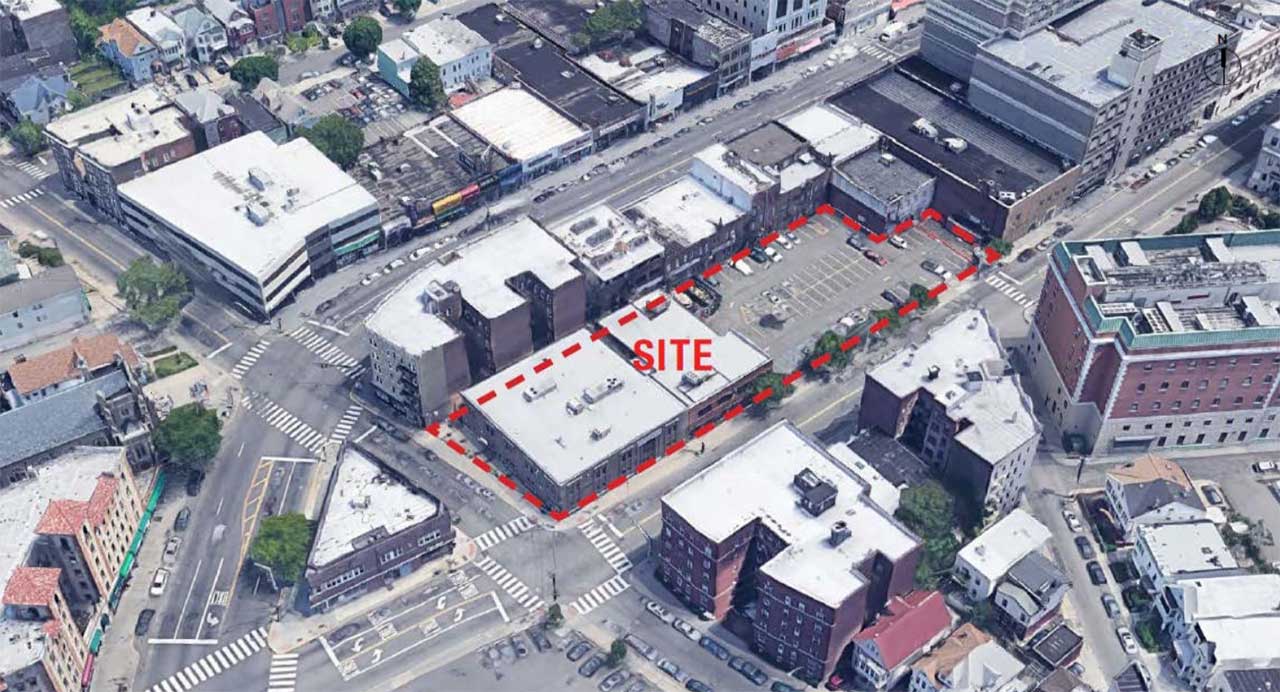
Jersey City’s third Urby project might not be coming to fruition after all.
The Jersey City Redevelopment Agency published an informational item last month stating that Ironstate Development, LLC “advised the agency that it has elected not to pursue the proposed project” around 168 Sip Avenue by Tonnele Avenue.
A February 2 letter from David Barry of Ironstate Development, LLC sought to terminate the firm’s status as the conditional redeveloper of the premises.
The letter, which was addressed to JCRA Executive Director Diana Jeffrey and Hudson County Community College Vice President Nicholas Chiaravalloti, noted that “we have taken this step with utmost reluctance but do not see a market for a project at this site currently [as] a result of the impact of the COVID pandemic on the residential real estate market.”
A request for comment sent to the email address for Barry listed on a letter has not yet been returned.
The plans for the Urby development at this HCCC-owned site were first revealed earlier in the pandemic during the JCRA’s April 2020 Board of Commissioners meeting. At the time, the proposal called for 466 “market rate residential units,” 52 “affordable residential units,” around 12,500 square feet of retail space, and 102 parking spaces.
Another informational item released by the JCRA noted that Phoenix Real Estate Partners, LLC notified the agency on January 19 that it also “has elected not to pursue the proposed project” involving 2 Fisk Street, 311 West Side Avenue, and 315 West Side Avenue.
This development, which was announced in August 2020, was expected to involve largely dismantling an incomplete building near the West Side Avenue Hudson-Bergen Light Rail stop in order to create a new 108-unit project with retail space.
These are not the first local projects to have been put on hold or canceled over the last year. For instance, Jersey Digs reported back in June 2020 that the developer behind Journal Square’s Dream Tower project reportedly contacted the JCRA to notify the agency that their proposal was “no longer feasible due to changes in the market caused by the COVID-19 pandemic.”
--
Pandemic Left NJ Transit Hanging by a Thread, but Big Changes May Lie Ahead
Feb, 09 2021 - 09:00 am
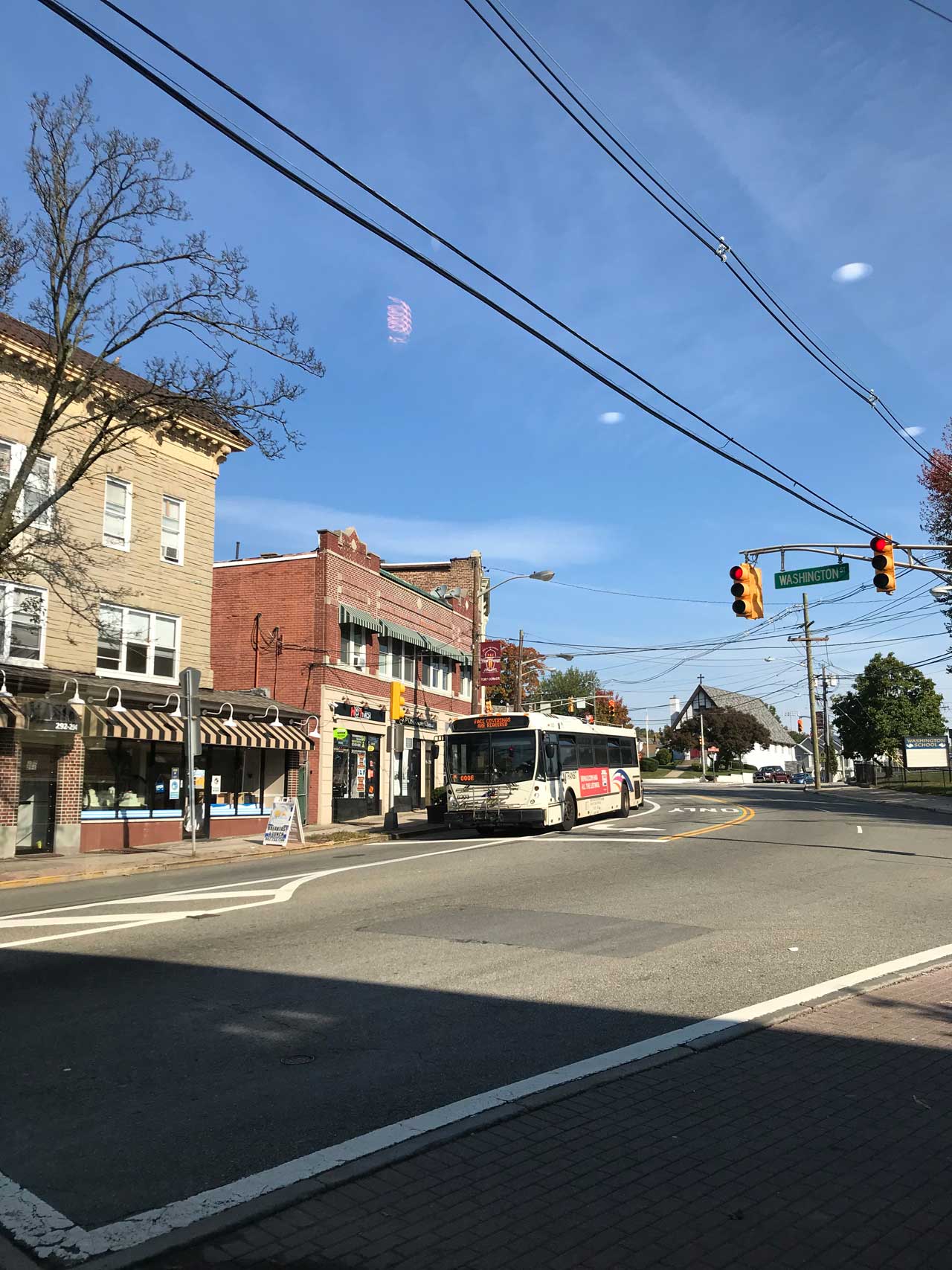
Riding an NJ Transit bus can be a nuisance. The delays. Bus stops are often blocked by parked cars. And did you bring exact fare? Drivers don’t give change.
The problem, experts say, is that our transit system is terribly outdated.
“Despite all the population and economic growth, major changes have not been made to the bus network since 1979,” said Kevin Garcia, a manager at Tri-State Transportation Campaign (TSTC).
Transport advocates like Garcia participated last week in an outreach event for Plan 2050, a 30-year survey by the North Jersey Transportation Planning Authority (NJTPA) that determines the needs and patterns of transit users in the state.
Garcia shared some of the findings of his organization’s 2019 study, A New Ride for New Jersey, which include the need to modernize fares, redesign the streets to prioritize buses, and update bus routes.
NJ Transit bus routes are based on a so-called wheel-and-spoke design that begins in a central hub and travels out to the suburbs, then back again. In Essex County, most buses travel to or from Newark, which is great if you work downtown or in Manhattan. But if you’re in the suburbs and you need to travel to another point in the suburbs, taking the bus is not an attractive option.
In fact, many people have begun to splurge on other modes of transport like ride shares, such as Lyft or Uber, rather than whittle away precious hours on a bus. The trend reflects in the 7.3-percent decrease in ridership since 2009, which was measured just before the pandemic hit.
Months of quarantine caused an even worse decline — a 90-percent dip in ridership that exposed even more vulnerabilities.
For instance, NJ Transit’s funding mostly relies on fare collection, according to Janna Chernetz, deputy director at TSTC. This dependence on passenger fares means that any major disruption in service is a potential budget crisis. It also means transit riders often have to put up with frequent fare hikes.
“When there is a budget shortfall in non-Covid years, transit riders are the first to be called upon to fill that gap,” Chernetz said. “And that has resulted in transit fares that are the highest in the nation and about 25 percent above the inflation rate.”
The lack of funding diversity directly translates into a lack of investment, meaning more broken-down buses and delays.
In 2015, however, public transportation officials in Houston pulled off what some believed was impossible. The bus routes were radically changed from a wheel-and-spoke design to a grid. Other cities took notice because not only had the system been completely overhauled in such a short time, but ridership increased as a result.
Seattle and New York City soon made similar changes, with modernizations about to happen in Los Angeles and D.C. The hope of NJTPA is that Newark will someday follow suit. These changes are crucial to win over new riders, and to spur growth in an economy that is still under the thumb of the pandemic.
“Investing in transportation improvements not only helps people get around easier and safer,” said Ted Ritter, external affairs manager of NJTPA, “but also pays dividends in terms of economic opportunities, jobs, and creating great places you want to live, work, and visit.”
--
Jersey City Set to Launch COVID-19 Rent Relief Program Next Week
Jan, 15 2021 - 09:00 am
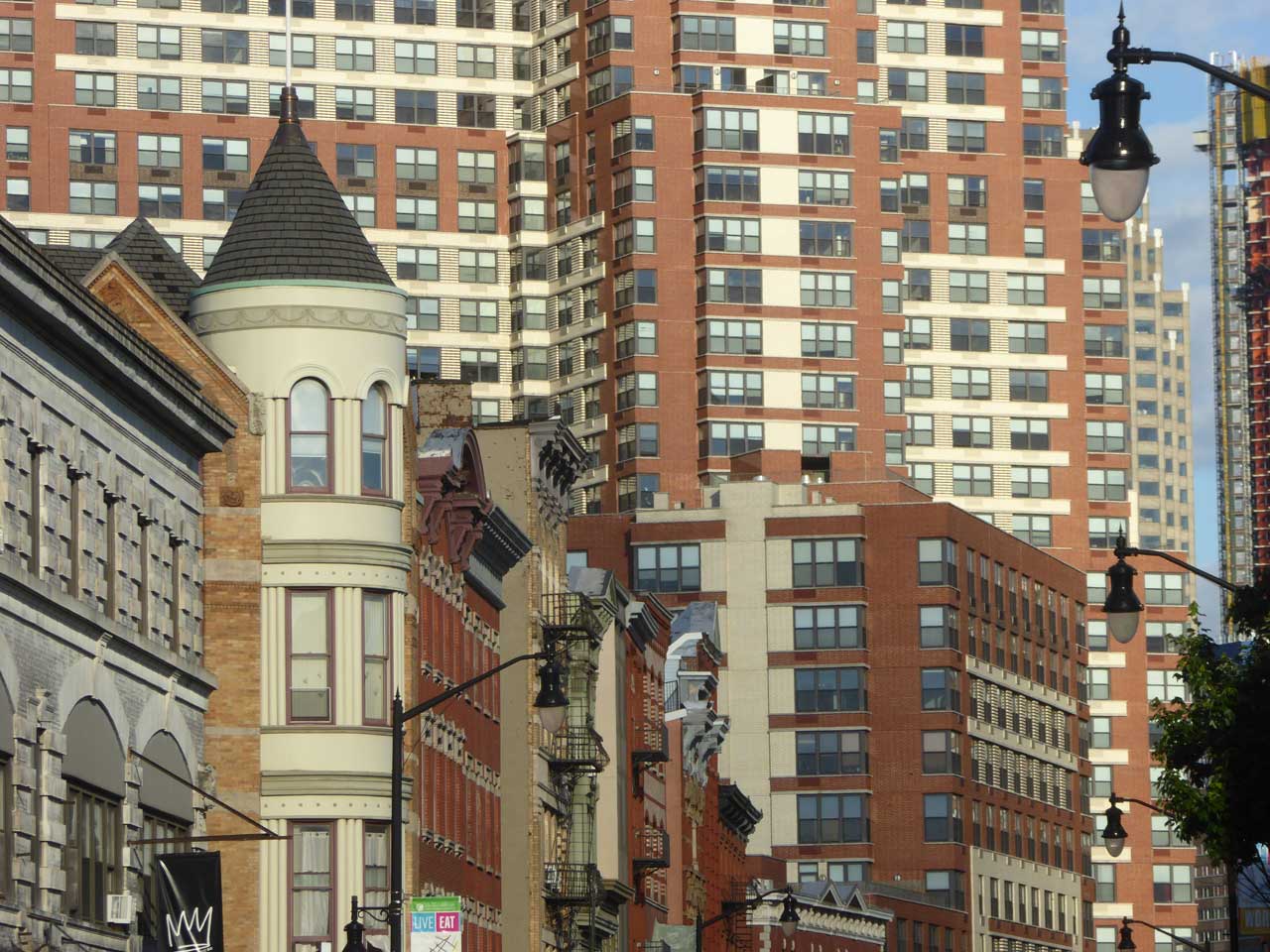
Help is on the way for Jersey City tenants that have been economically impacted by the coronavirus as the city will soon start accepting applications for an emergency rental assistance initiative to be run via a lottery system.
Jersey City recently set up a new website for their upcoming COVID-19 Hardship Assistance Program, which will provide one-time rent payments of up to $1,500 for low- and moderate-income households that are selected. The grant program will make payments directly to landlords and can cover rent arrears that have incurred since March 1, 2020.
The program is being funded with $2.5 million from the Mayor’s COVID-19 Relief Fund and to administer the program, the city is partnering with nonprofit organizations York Street, Women Rising, United Way, and Puertorriqueños Asociados for Community Organization (PACO). Each of these nonprofits will receive $625,000 under the initiative to distribute to those selected through a random lottery.
To apply for the program, you must be over 18 and have a valid lease in Jersey City. Applicants must owe rent for three months or fewer dating back to March 2020 and not owe any payments from before that date. A household also must provide documentation that they have suffered a loss of income because of the COVID-19 pandemic.
Any residents who have already received rental assistance from New Jersey’s COVID-19 Emergency Rental Assistance Program that was launched in July won’t be eligible for Jersey City’s upcoming program. Residents can qualify for the aid if they make less than 80% of the Area Median Income, which comes out to $55,250/year for an individual and $78,900/year for a family of four.
The program will be administered by the Jersey City Economic Development Corporation and residents can submit an application for consideration at this link. The endeavor will launch on January 18 at 9 a.m. and the registration period will end at 5 p.m. on February 1.
Jersey City has not yet announced the date of the lottery drawing that will decide which applicants are awarded the aid.
--
Newark Accepting Public Comment Regarding Plan to Spend $3.5M of CARES Act Funds
Dec, 22 2020 - 11:15 am
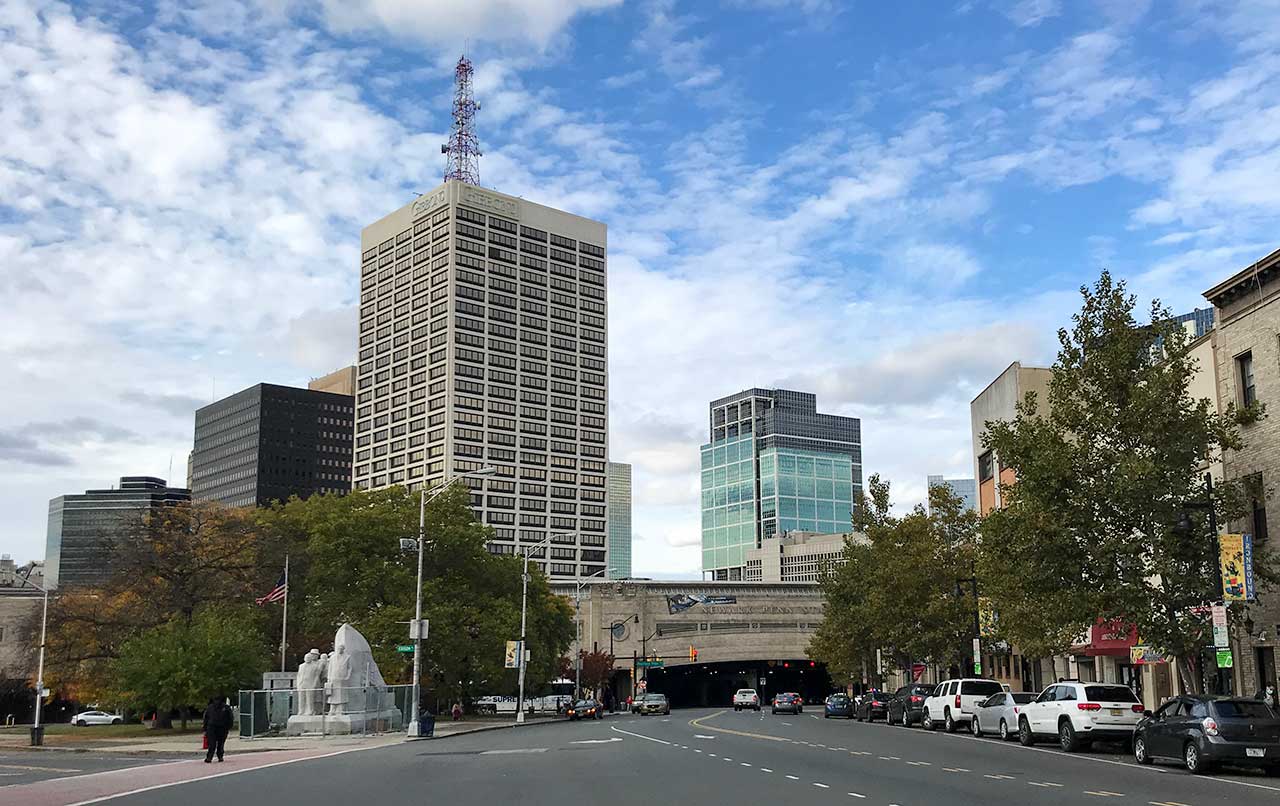
The City of Newark is currently accepting input from the community regarding its plan to spend a recent $3,500,308 federal allocation.
A public notice released by Newark’s municipal government earlier this month says that $2 million worth of funding that had been allocated in September through the Community Development Block Grant Program as part of the CARES Act could be used for rental assistance while $1.2 million could be used for microenterprise assistance.
The notice also indicates that $300,308 could be spent on “special economic development activities,” but according to a spokesperson for the municipal government, these funds would also be used for microenterprise assistance for small businesses.
City Hall is seeking to complete a substantial amendment to its previous annual action plan through the United States Department of Housing and Urban Development in order to facilitate this, with the notice mentioning that “the action plan will be amended to incorporate these funds as an additional resource to be used to prevent, prepare for, and respond to the coronavirus pandemic.”
The City of Newark recently held information sessions over Facebook Live regarding how residents can submit applications for emergency rental assistance and emergency small business grants.
Comments from members of the public regarding the proposal must be submitted to Jenine Hazzard-Williams of the Newark Department of Economic and Housing Development by Wednesday, December 23, according to the notice, which adds that the traditionally required 30-day minimum for a public comment period has been waived “given the need to expedite actions to respond to COVID-19.”
Hazzard-Williams can be reached by email at [email protected].
Related:
- Plans for Newark’s Metropolitan Building Site Now Call for 22-Story Development
- A Year After Historic Mansion in Newark Burned, Former Owner Fights for a Second Chance
- ‘862 Broadway Residences’ Proposed for Newark’s North Ward
--
Looking Back at Past Outbreaks as ‘Dark Winter’ Looms
Nov, 09 2020 - 11:54 am
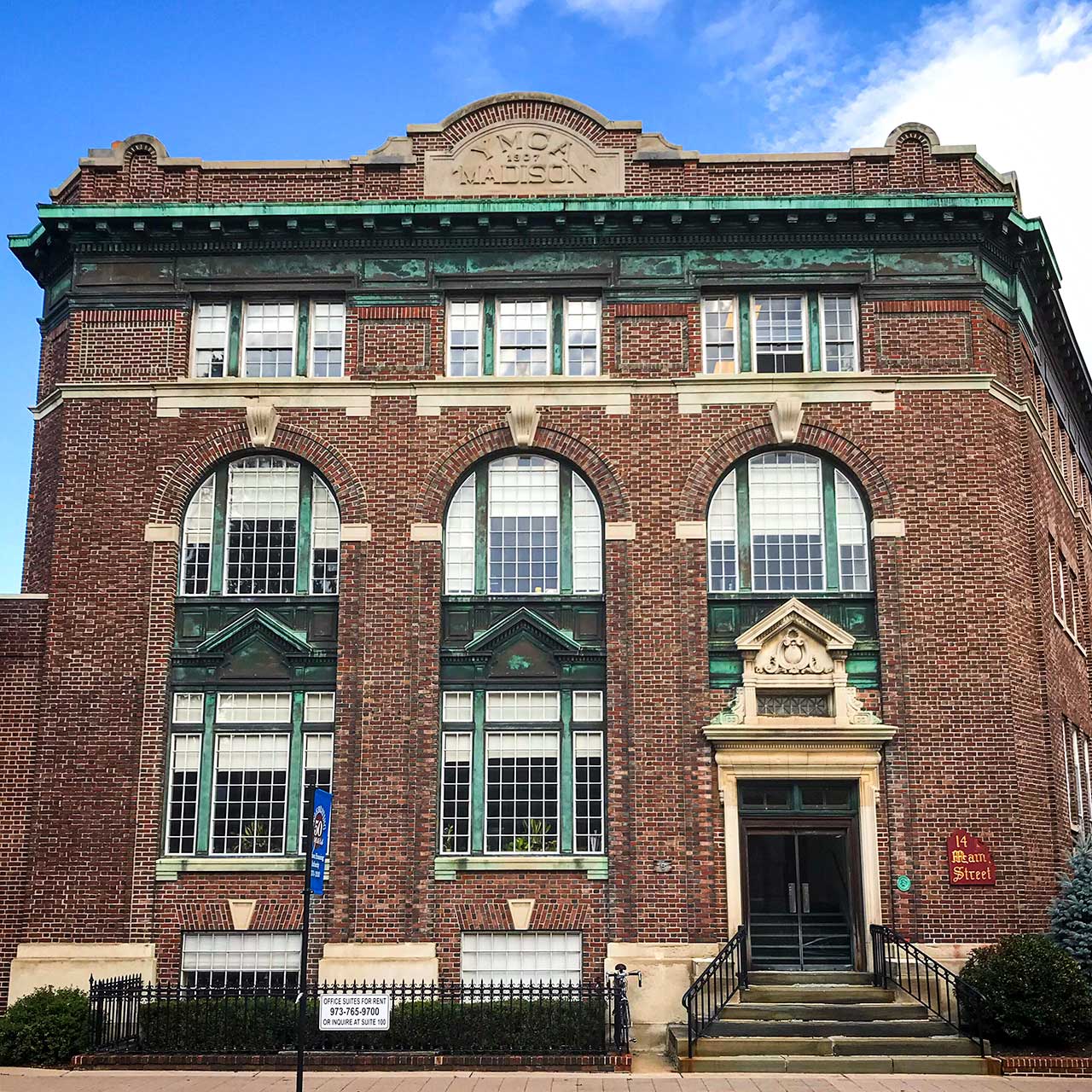
As the nation braces for a “dark winter” of coronavirus, remember that our predecessors survived much worse.
Life in the early 1900s was full of hardship. Mrs. Barrett, a South Orange resident, nearly lost her entire family to disease. First, her husband died of pneumonia in 1907. Then four years later, three of her children caught diphtheria while swimming in a New Haven lake. Her seven-year-old daughter would end up dying of the infection.
Pneumonia, diphtheria, scarlet fever, the measles — these were only some of the ways you could die of sickness in the old days. There was also typhoid fever, tuberculosis, smallpox, spinal meningitis, cholera, the Spanish flu, and polio.
“Rates of infectious disease were astronomically higher just a hundred years ago. This was just something that was priced into people’s daily routine,” said Brian Daniels, biology professor at Rutgers University. “But now with coronavirus, we’re getting a taste of what it used to be like.”
The first epidemic in the United States was yellow fever in the 19th century. This was before scientists understood how diseases spread. It seemed like a terrible coincidence that dockworkers kept getting sick until we figured out that mosquitos, which lay eggs at the water’s edge, can carry the disease. In fact, the best doctor of that era, Alexander Anderson from Bellevue Hospital, couldn’t save his own wife, son, mother or brother — they all died from yellow fever.
Early health officials compensated for limited know-how with strict quarantines that many today would find objectionable. Alfred Schmock from South Orange was diagnosed with scarlet fever, but decided to leave his house to get a second opinion. He was arrested. Mrs. Mendel from Maplewood was taken to court for failing to notify the health department that three of her children had the measles. Police held up a train at South Orange station to apprehend passenger Rubino Lubiano, who had broken quarantine after being diagnosed with scarlet fever.
And Thomas Hudson, a student at Park Avenue Elementary School in Orange, was diagnosed with scarlet fever by a school nurse. He was rushed off in an ambulance before his parents were notified and was brought to the infamous Isolation Hospital in Belleville.
In the late 19th century, germ theory was discovered. But this knowledge was limited to academic circles and really didn’t affect public-health policies for decades to come, Daniels explained.
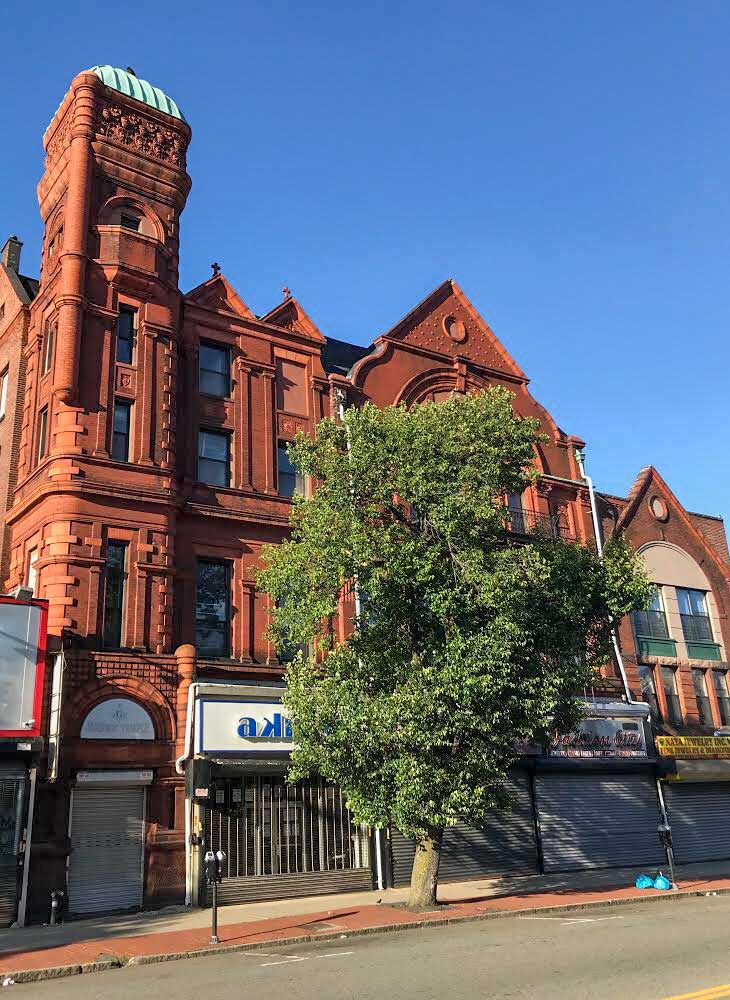
It was much harder in the old days to inform the public how to stay safe. Today, health information comes to us instantly through the screens of our phones. In 1911, the Anti-Tuberculosis League held exhibitions on Main Street in Orange to spread awareness and even named Oct. 27 Tuberculosis Day.
The reason for so much sickness was because most people were living in a sanitation nightmare. Tenement houses lacked ventilation. Industrial workers labored in crowded warehouses. Garbage collection by “scavengers” was spotty, so vermin had a buffet.
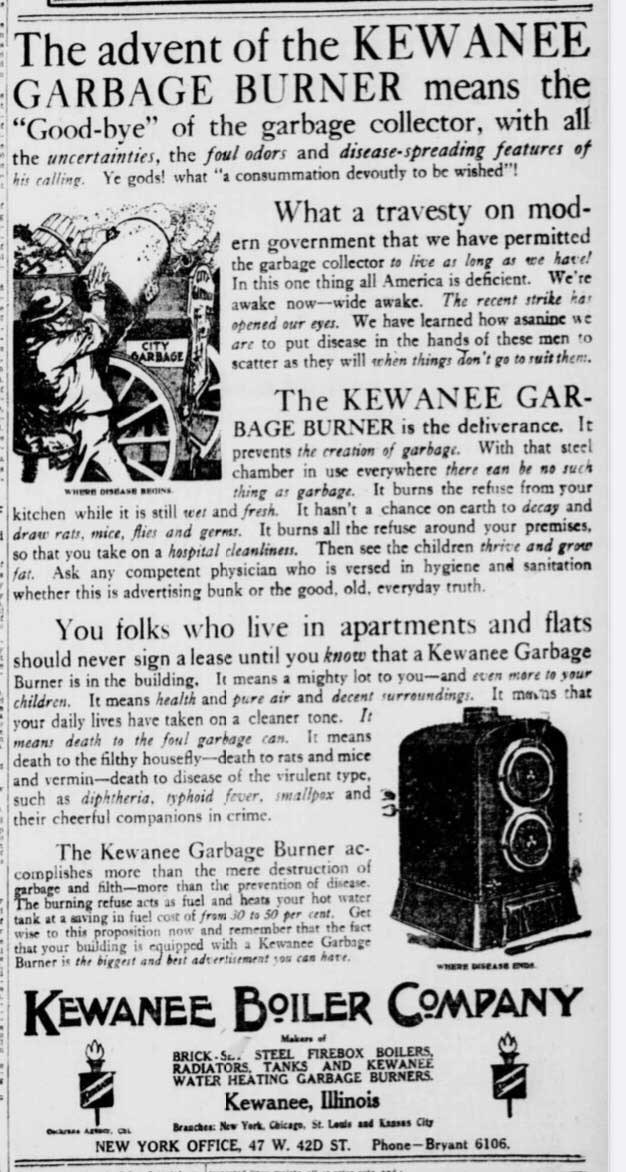
In the New York Tribune from 1911 the Kewanee Boiler Company advertised a metal receptacle to burn garbage in, which had the dual function, it claimed, of saving people from diseases and heating water. At the end of a long day, who doesn’t enjoy a warm bath heated by a pile of burning trash?
Water, as the Barrett family found out, was a major breeding ground for pests and diseases. Fatal typhoid outbreaks ravaged 50 people in Montclair in 1894, then 73 more in 1914 at St. Anthony’s Orphan Asylum in Newark because of dirty wells. In the Oranges, the reservoir at Campbell’s Pond was finally filtrated in 1908. That same year, the Orange Board of Health began pouring petroleum into sewers to kill mosquitos, which made its way into the rivers along with other raw sewage.
Perhaps the infection most similar to the coronavirus, in terms of who it affected and how severely, was tuberculosis. Also called phthisis, consumption, and the white plague, it attacks the respiratory system and is somewhat unpredictable: some people recover quickly, others die from gruesome complications. And just as we see that the coronavirus disproportionately affects certain demographics, the spread of tuberculosis is largely determined by social and environmental factors. It is still a health concern in Africa and Asia.

Tuberculosis is particularly dangerous because it can taint the food supply, including through the dairy industry. The Newark Evening Star reported that in 1913, East Orange alone drank 15,000 quarts of milk each day, so there was huge risk for outbreaks. Things got ugly at the Fairfield Dairy Company in Montclair, where the Tuberculosis Cattle Commission found 126 positive cows.
In the mid-20th century, widespread vaccination, improved housing, decreased urbanization, and wastewater management drastically reduced the rates of infection in the United States, according to Daniels. But there was a tradeoff: pandemics are fewer now but they spread far more quickly than before. In the Middle Ages it took decades for the Bubonic Plague to spread from Asia to Europe. The coronavirus went global in a matter of months.
“Our increasing connectedness has made control harder,” said Daniels, who has co-authored several papers on West Nile virus. “We tend to think that modernity has increased our safety, but there are ways that it increases our risk as well.”

Still, there is something worthwhile to learn from studying the past. At the current exhibition on epidemics at the Museum of Early Trades & Crafts in Madison, you can find newspapers articles, personal letters, and diary entries by people witnessing outbreaks in the 18th and 19th century. Despite the many years between us and the people who wrote them, the sentiments are oddly familiar.
“Everyone’s saying pretty much the same thing about how these outbreaks were affecting them,” said Shelley Cathcart, the museum curator. “We’ve been through epidemics before — we’ll make it through this one, too.”
Related:
- Beloved Newark Chorus Finds New Home in Historic Schoolhouse
- As Construction Boom Continues, Social Media Influencers are Becoming Preservationists
- Kastner Descendant Dreams of New Life for Historic Newark Mansion
--
Newark to Continue Using Hotel to House Homeless Population During Pandemic
Jul, 31 2020 - 10:11 am
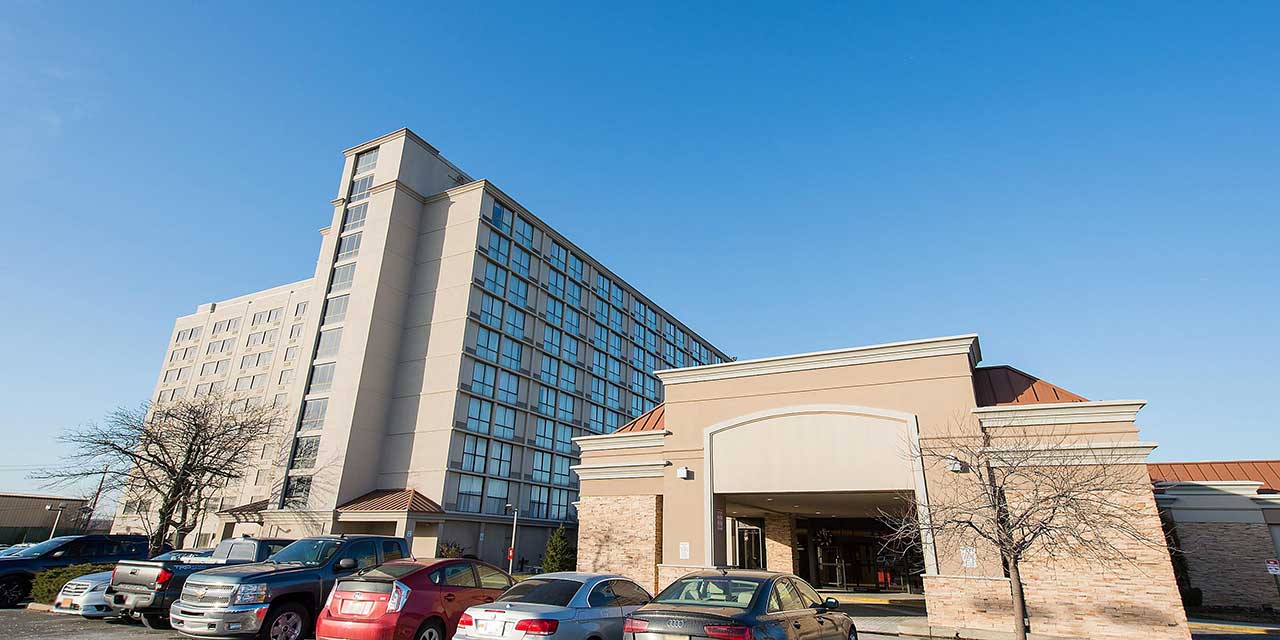
The City of Newark will continue to lease hundreds of rooms in a local hotel in order to provide housing for people experiencing homelessness during the COVID-19 pandemic.
The municipal government of New Jersey’s largest city was authorized by the Newark Municipal Council to lease 325 single occupancy rooms and a few other areas at the Holiday Inn Newark International Airport North on Frontage Road. A new ordinance states that the rooms are being leased “in order to stem the spread of the COVID-19 pandemic and its impact on the homeless, senior population and any other vulnerable population.”
The ordinance, which was adopted on July 8 and certified on July 17, states that Newark’s purchasing agent and the company that owns the hotel previously entered into two lease agreements covering from April 6 through June 24. This ordinance will cover the lease from June 25 to September 1, allowing for up to $1,616,325 in rent payments.
A copy of the latest lease agreement that was posted by the municipal government states that this rapid rental housing service will be for “non-COVID-19 positive patients only” who need to shelter in place. It adds that three additional rooms are being provided at no cost for police officers from the Newark Department of Public Safety “for the purpose of providing them with a place to rest” and that the hotel owner will provide breakfast, lunch, and dinner each day for up to 325 people.
The hotel is situated next to Northern State Prison across Interstate 78 and Routes 1 and 9 from Newark Liberty International Airport. It was previously known as the Ramada Plaza Newark Airport before undergoing a rebranding at the end of 2019.
Related:
- Building on Downtown Newark’s Halsey Street Could Undergo Expansion
- Board Approves Changes to Newark’s 155 Washington Street Project
- Newark’s Metropolitan Building Could Be Expanded Into 18-Story Development
--
Jersey City Expanding Free Showers and Food Services to Homeless Amid Covid-19
Mar, 25 2020 - 01:04 pm
Jersey City, Mayor Fulop, and health officials announced today efforts to help the city’s vulnerable homeless population.
In a press release, the city said, “The city is increasing humanitarian efforts during the Coronavirus pandemic by expanding life-saving services for the homeless – including the reopening of free public showers, supplying meals and personal hygiene kits to support them, while also assisting the county to secure temporary housing for the homeless to self-quarantine.”
“We have witnessed how COVID-19 has had a devastating impact around the world on all of us, but when you think of those who have the least in society, they are even more vulnerable during this crisis,” Mayor Fulop said. “We all are pulling together to normalize our lives in this unprecedented challenge of our times, but the only way we will succeed is if we look out for those who need help the most, and leave no one behind.”
Read the full release here: Jersey City Protecting Most Needy: Expanding Free Showers and Food Services amid Covid-19 State of Emergency
--
New Jersey Begins Releasing Low-Risk Inmates Due to Coronavirus
Mar, 24 2020 - 02:08 pm
The worldwide COVID-19 pandemic is changing societies at rapid speed. Actions that were out of the question only weeks ago are now a reality. We can now add the release of low-risk inmates to the growing list of changes.
New Jersey’s chief justice of the state’s supreme court, Stuart Rabner, signed an order Sunday night to suspend or commute sentences being served by inmates as a condition of probation or a municipal court conviction, reported the New York Times.
At a presser on Monday, Governor Murphy said, “We are the only state in America doing this.”
The release of the inmates began this morning.
My top priority is the health and safety of ALL New Jerseyans – including those who are incarcerated.
I commend @NewJerseyOAG, county prosecutors, @NJPUBDEF and @ACLUNJ for balancing public health, public safety, and victims’ rights.
https://t.co/7ajM8qg93r— Governor Phil Murphy (@GovMurphy) March 24, 2020
Jails and prisons make social distancing nearly impossible. This raises the ethical dilemma of how to protect the country’s massive incarcerated population for the rapidly spreading COVID-19 virus.
Hopefully, NJ’s move inspires other states to protect their vulnerable inmate populations.
--